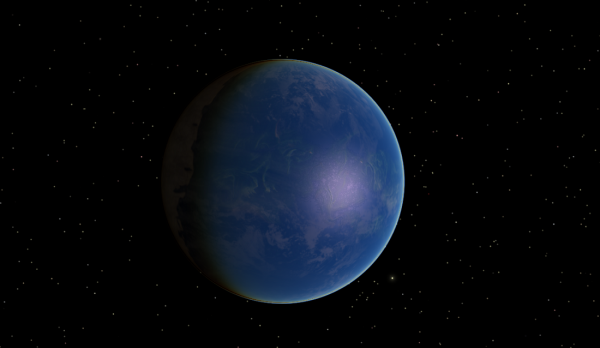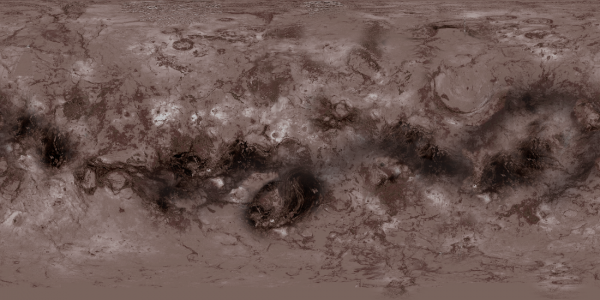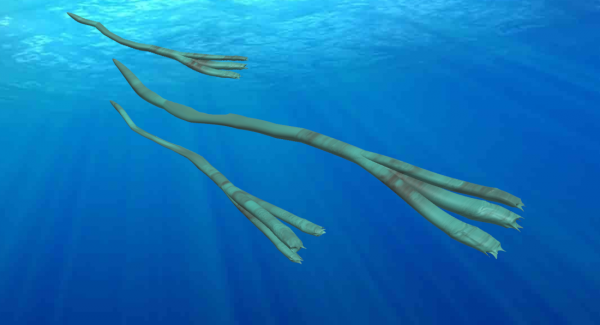BY LETTER
Jirayaka (Garden World)
Galactography > Regions of Space > Middle Regions/Hinter-regions
Galactography > Systems and Worlds > Systems & Worlds I - J
Galactography > Systems and Worlds > Systems & Worlds I - J
Life-bearing water world with partially frozen seafloor | |
 Image from Steve Bowers | |
| Jirayaka is tidally locked, and the starward hemisphere is covered in a water ocean | |
Table of Contents
1. Data Panel2. Introduction
3. Name
4. Geography
5. Biology
| System | Names: Inyanaine/Okerbart, YTS 878112-661 Stars: 2 1) Inyanaine (YTS 878112-661 A) 2) Okerbart (YTS 878112-661 B) Location: - Distance from Sol: 448 ly - Constellation: Eridanus |
|---|---|
| Parent star | Names: Inyanaine, YTS 878112-661 A Physical characteristics: - Mass: 0.524 x Sol - Radius: 0.518 x Sol - Spectral type: M1 V - Luminosity: 0.038 x Sol (bolometric) - Temperature: 3,540 Kelvin - Age: 6.3 billion years |
| Planet | Names: Jirayaka Orbital characteristics: - Semi-major axis: 39,643,000 km (0.265 AU) - Orbital period: 68.83 days - Eccentricity: 0.033 Physical characteristics: - Type: Macrobiotic Videntian HydroTerrestrial LapiRhean InuTundral AquaGaian AquaThalassic (tidally-locked water world) - Mass: 1.407E+25 kg (2.356 x Earth) - Radius: 8,469.4 km (1.329 x Earth) - Density: 5,352 kg/m^3 - Mean surface acceleration: 12.844 m/s^2 (1.309 g) - Rotation period: Tidally-locked - Albedo: 0.310 - Mean insolation: 735.8 W/m^2 - Mean surface temperature: 295 K Atmosphere: - Surface pressure: 169.7 kPa - Composition: 92.4% nitrogen, 5.5% oxygen, 1.7% carbon dioxide, 0.4% argon, trace amounts of carbon monoxide, ammonia, neon, hydrogen cyanide, hydrogen, helium, and methane. |
| Reached | 2789 AT |
Introduction
Whether the discovery of macrobiotic life on Jirayaka is truly groundbreaking is somewhat debatable. To some, this AquaThalassic world served as a beacon of hope in the search for complex life on ocean worlds; while microbial life is common on these worlds, few of them sport complex indigenous organisms as the nutrients in their massive oceans are often simply so diluted that it is difficult to sustain large, complex ecosystems. Others weren't as thrilled; with the majority of its seafloor still exposed and pumping out energy and nutrients, its biosphere resembles a Gaian world more so than a 'true' Thalassic world. Nevertheless, many do agree that the planet, whose ocean weighs almost 40 times Earth's, served as a proof that worlds with vast oceans can, in fact, support multicellular life. Jirayaka was claimed by a Caretaker God known as Hokumbe in 2828, and remains under eir protection ever since.Name
The planet is named after Jirayaka Mai-risa, a scientist famous for eir work on the life-bearing world Darwin. Ey was the leader of one of the most prolific teams of paleoxenologists who discovered and catalogued a large number of extinct macrobiological life forms in the strata of that world. The Jirayakan period on Darwin, one of the periods when that world had the greatest biodiversity, was named after em. Hokumbe, the Caretaker God safeguarding Jirayaka, adopted the name of one of the other researchers in Jirayaka's team, Dendo Hokumbe.Geography
 Image from Steve Bowers | |
| The seafloor of Jirayaka | |
In the Current Era, the high pressure ice covers roughly 14% of the crust's surface. Apart from several 'heat columns' - regions with hydrothermal vents and/or volcanoes warming up and melting the ice, some of which break through the ice, access to the seafloor in these areas is mostly blocked.
 Image from Steve Bowers | |
| Sea Leeks, Lernaia hydrii, predatory organisms in the upper ocean of this world | |
Biology
As typical of worlds of its type, Jirayaka's biosphere is divided into two major groups: the photic 'surface' ecosystems and the benthic 'seafloor' ecosystems. Much like other similar planets' counterparts, the photic organisms depended on the photosynthesis-capable planktons and plant-analogs floating near the surface to capture starlight, while volcanoes and hydrothermal vents are the hotspots for the benthic life, providing both heat and nutrients from the mantle. Currently, the seafloor ecologies are the most diverse due to the abundance of nutrients available, but the surface ecosystems are growing in biodiversity and collective total mass over time. Elsewhere, life is relatively sparse; between the surface of the ocean and the seafloor, several species of mostly-sessile filter-feeding detritivores can be found languidly floating around, capturing the constant shower of marine snow. Even amidst the mostly lifeless ice fields, several species of ice-burrowers can be found, tunneling and scraping the 'dirty' ice for organic debris. Finally, there are large communities of microorganisms beneath the crust.Several billion years from now, the seafloor will continue to freeze over, and the ice would eventually claim the majority, if not the entirety of the seafloor crust. Combined with the declining geological activities, this will likely eventually result in a mass die-off of the benthic ecosystems, with survivors hiding below the seafloor, huddling around the last few active hydrothermal vents, or scraping by on or in the frozen seafloor. Already mostly removed from the seafloor, the surface ecosystems will likely live on mostly unaffected. The intermediate depths will continue to be largely devoid of life save for the filter-feeding detritivores.
Related Articles
Appears in Topics
Development Notes
Text by The Astronomer, dangerous_safety
Initially published on 03 August 2020.
Initially published on 03 August 2020.






